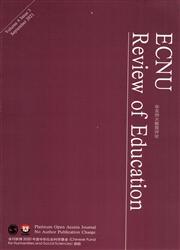英语学习者的技术辅助阅读教学:方法论综述
IF 2.6
Q1 EDUCATION & EDUCATIONAL RESEARCH
引用次数: 0
摘要
本研究通过对K-12环境下英语学习者技术辅助阅读教学(TARI)文献的方法学回顾,旨在提高对TARI研究的认识,并指导未来的研究方向。这项研究调查了2000年至2020年间发表的32篇同行评审期刊文章。对每篇文章的研究目标、阅读技能、学习者人口统计和背景、理论框架、研究设计和结果进行了分析。对文献的回顾表明,人们非常关注通过总结性评估来评估TARI的有效性,但对学习者的识字实践和数字环境中的互动参与的关注有限。此外,在评估技术在促进ELL阅读进步方面的有效性方面,明显缺乏替代方法,并且继续强调发展传统识字而非多模式识字。TARI可以增强阅读动机,促进协作学习,提供支架,提高阅读成绩,并扩展符号学资源。作为TARI的第一次全面方法论综述之一,本研究阐述了多元文学时代的ELL阅读教育。研究结果对新冠肺炎大流行期间迅速扩大的以技术为导向的教育有影响。本文章由计算机程序翻译,如有差异,请以英文原文为准。
Technology-Assisted Reading Instruction for English Language Learners: A Methodological Review
By methodologically reviewing the literature on Technology-Assisted Reading Instruction (TARI) for English Language Learners (ELLs) in K-12 settings, this study aims to advance the knowledge of TARI research and guide future research directions. This study examines 32 peer-reviewed journal articles published between 2000 and 2020. Each article was analyzed for research objectives, reading skills, learner demographics and contexts, theoretical frameworks, research designs, and outcomes. A review of the literature reveals a strong focus on evaluating the efficacy of TARI through summative assessments, but limited attention to learners’ literacy practices and interactive engagement in digital contexts. Additionally, there is a marked lack of alternative approaches to assessing the effectiveness of technology in promoting ELLs’ reading progression and a continued emphasis on developing traditional literacy over multimodal literacy. TARI can enhance reading motivation, foster collaborative learning, provide scaffolding, improve reading performance, and expand semiotic resources. As one of the first comprehensive methodological reviews of TARI, this study elucidates ELL reading education in the era of multiliteracy. Results have implications for technology-mediated education, which expanded rapidly during the COVID-19 pandemic.
求助全文
通过发布文献求助,成功后即可免费获取论文全文。
去求助
来源期刊

ECNU Review of Education
Social Sciences-Education
CiteScore
4.90
自引率
0.00%
发文量
41
审稿时长
10 weeks
 求助内容:
求助内容: 应助结果提醒方式:
应助结果提醒方式:


